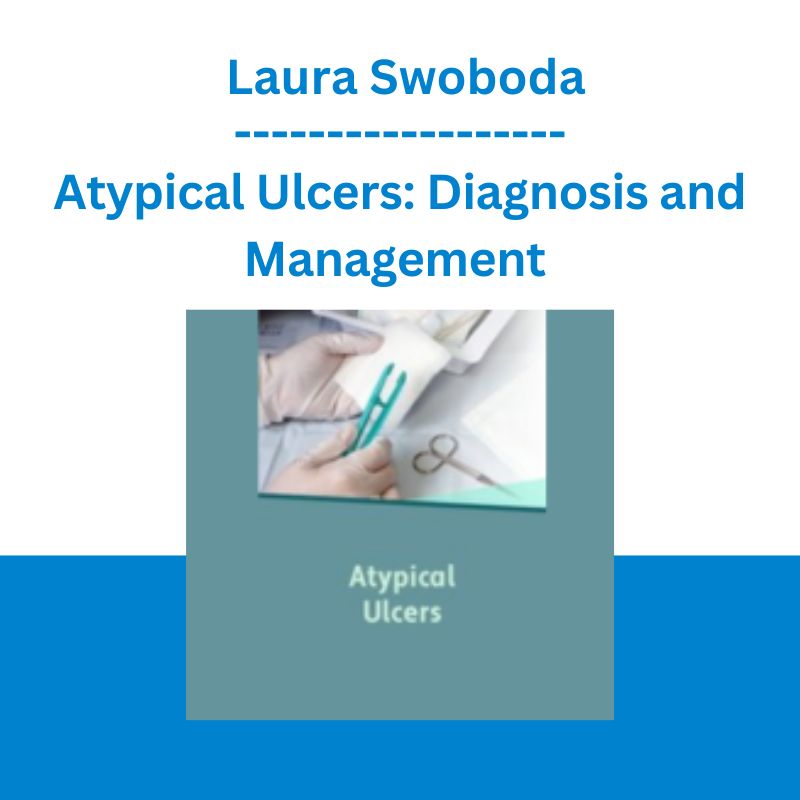*** Proof of Product ***
Exploring the Essential Features of “Atypical Ulcers: Diagnosis and Management – Laura Swoboda”
Atypical ulcers, such as calcinosis cutis, calciphylaxis, pyoderma gangrenosum, vasculitis, skin cancer, fungating tumors, and more are due to alternative etiologies and more challenging to manage than most chronic wounds. This presentation reviews the clinical presentation and treatment of several atypical wounds including red flags in the identification of wounds that may be caused by atypical factors. Completion of the presentation will leave attendees with an understanding of atypical ulcers to maximize positive outcomes for patients.
Speaker:
Laura Swoboda, DNP, APNP, FNP-BC CSWCN-AP®, is a professor of health sciences, family nurse practitioner, and certified wound specialist in Milwaukee metro, Wisconsin. Dr. Swoboda is on the National Pressure Injury Advisory Panel (NPIAP)’s Prophylactic Dressing Standards Initiative Task Force, a member of the editorial board for the Wound Care Learning Network and Wound Management and Prevention, and on the board of directors for the Wound, Ostomy, and Continence Nursing Certification Board (WOCNCB) and the Association for the Advancement of Wound Care (AAWC).
Speaker Disclosures:
Financial: Dr. Laura Swoboda has employment relationships with The Healing Institute and Medical College of Wisconsin. She receives a speaking honorarium and consulting fee from Histologics, Hartmann, Convatec, Aroa, AOTI, Innovacyn, Solventum, Smith & Nephew. Dr. Swoboda receives a speaking honorarium and recording royalties from PESI, Inc. All relevant financial relationships with ineligible organizations have been mitigated.
Non-financial: Dr. Laura Swoboda serves on the board of directors for the Association for the Advancement of Wound Care and the Wound Ostomy Continence Certification Board. She is an editorial board member of Wound Care Learning Network. Dr. Swoboda previously was a consultant for Essity and Innovacyn.
Objectives:
- Identify what types of wounds are considered atypical and their prevalence.
- Determine history and presenting signs or symptoms that may signal atypical ulcer etiology.
- Describe commonly encountered atypical diagnosis including inflammatory ulcers and cancerous lesions.
- List special considerations for atypical ulcer plans of care.
Outline:
Review atypical ulcers
- Prevalence and incidence
- Definition
Review typical and atypical wound assessment findings
- tissue types
- edges
- types of atypical wounds
Review clinical presentation and treatment of a subset of atypical wounds
- calcinosis cutis
- infectious ulcers
- cancerous lesions
Target Audience:
- Occupational Therapist
- Occupational Therapy Assistant
- Physical Therapist
- Physical Therapist Assistant
- Registered Nurse
- Licensed Practical Nurse/Licensed Vocational Nurse
- Certified Nurse Assistant
- Medical Assistant
- Nursing Home Administrator
- Nurse Practitioner
- Podiatrist
- Physician Assistant/Associate
- Physician
Please see the full list of alternative group-buy courses available here: https://lunacourse.com/shop/










 George Fontanills & Tom Gentile - Optionetics Wealth Without Worry Course
George Fontanills & Tom Gentile - Optionetics Wealth Without Worry Course  Trade Like Mike - The TLM Playbook 2022
Trade Like Mike - The TLM Playbook 2022  Evidence-Based Examination of the Shoulder Complex & Criteria to Return to Sport - George Davies & Robert Manske
Evidence-Based Examination of the Shoulder Complex & Criteria to Return to Sport - George Davies & Robert Manske  Dave Landry - Stock Selection Course
Dave Landry - Stock Selection Course  Matan Feldman - The 13-Week Cash Flow Modeling - Wall Street Prep
Matan Feldman - The 13-Week Cash Flow Modeling - Wall Street Prep  Racing Workshop - Complete Online Package
Racing Workshop - Complete Online Package